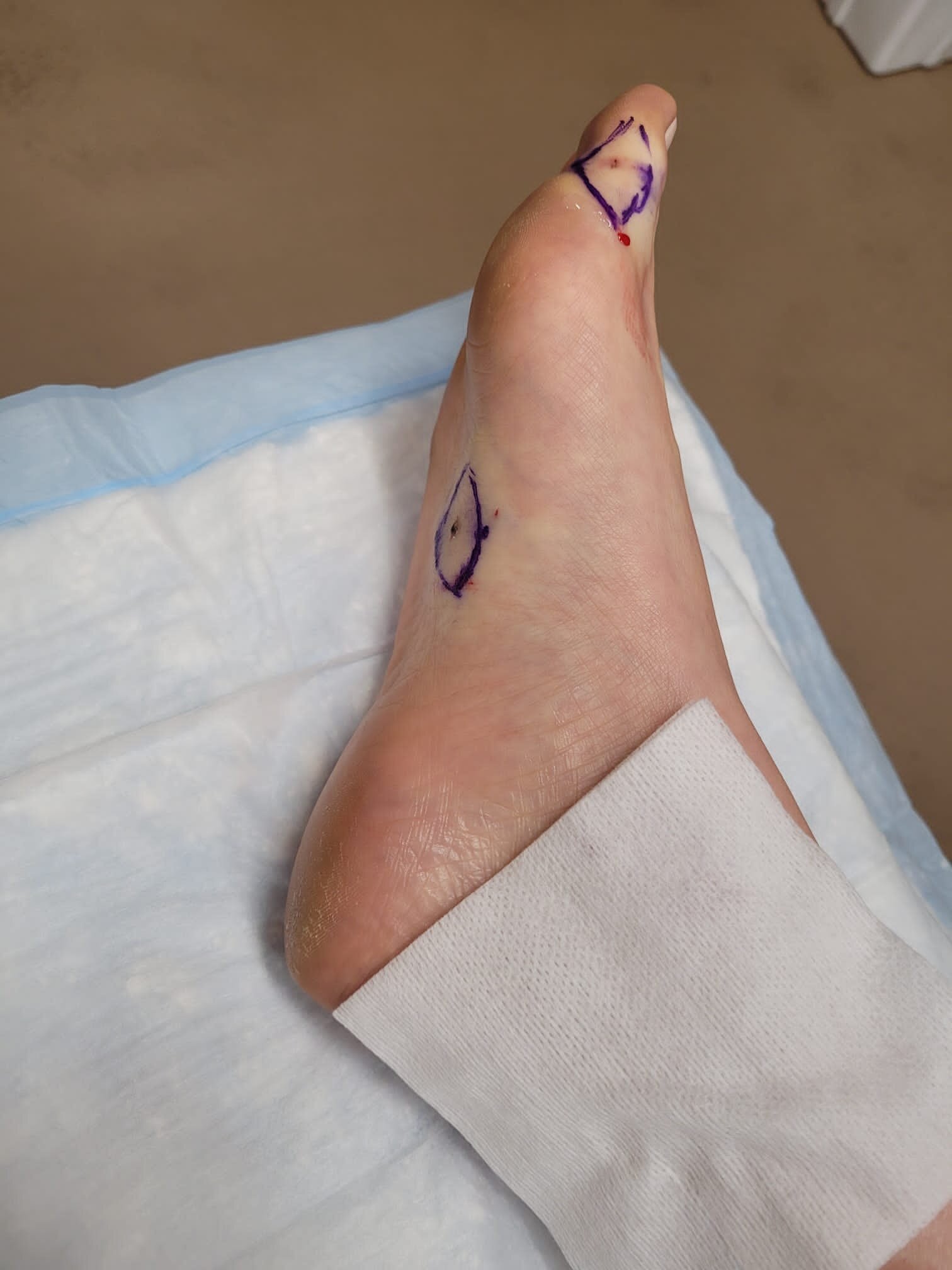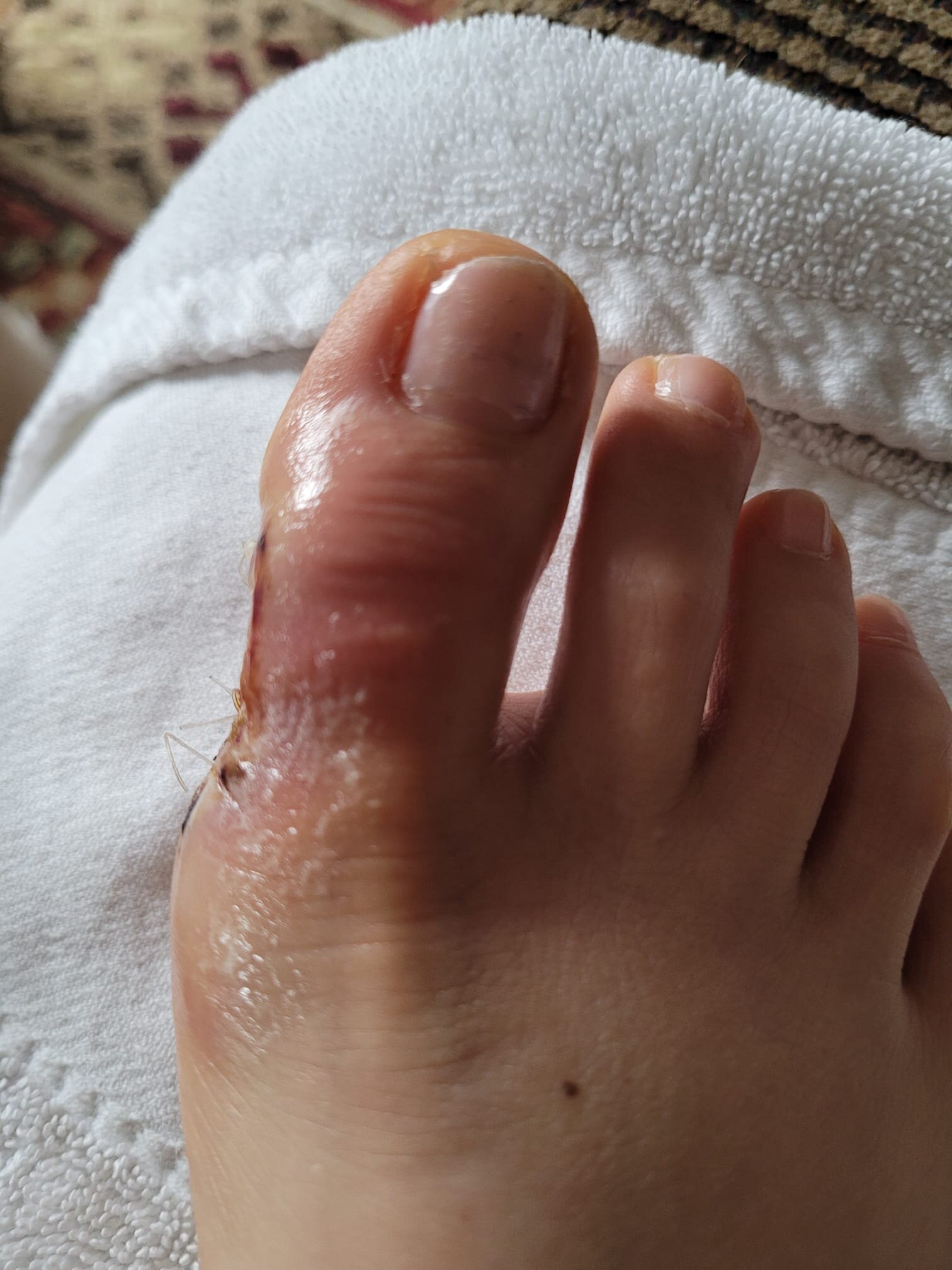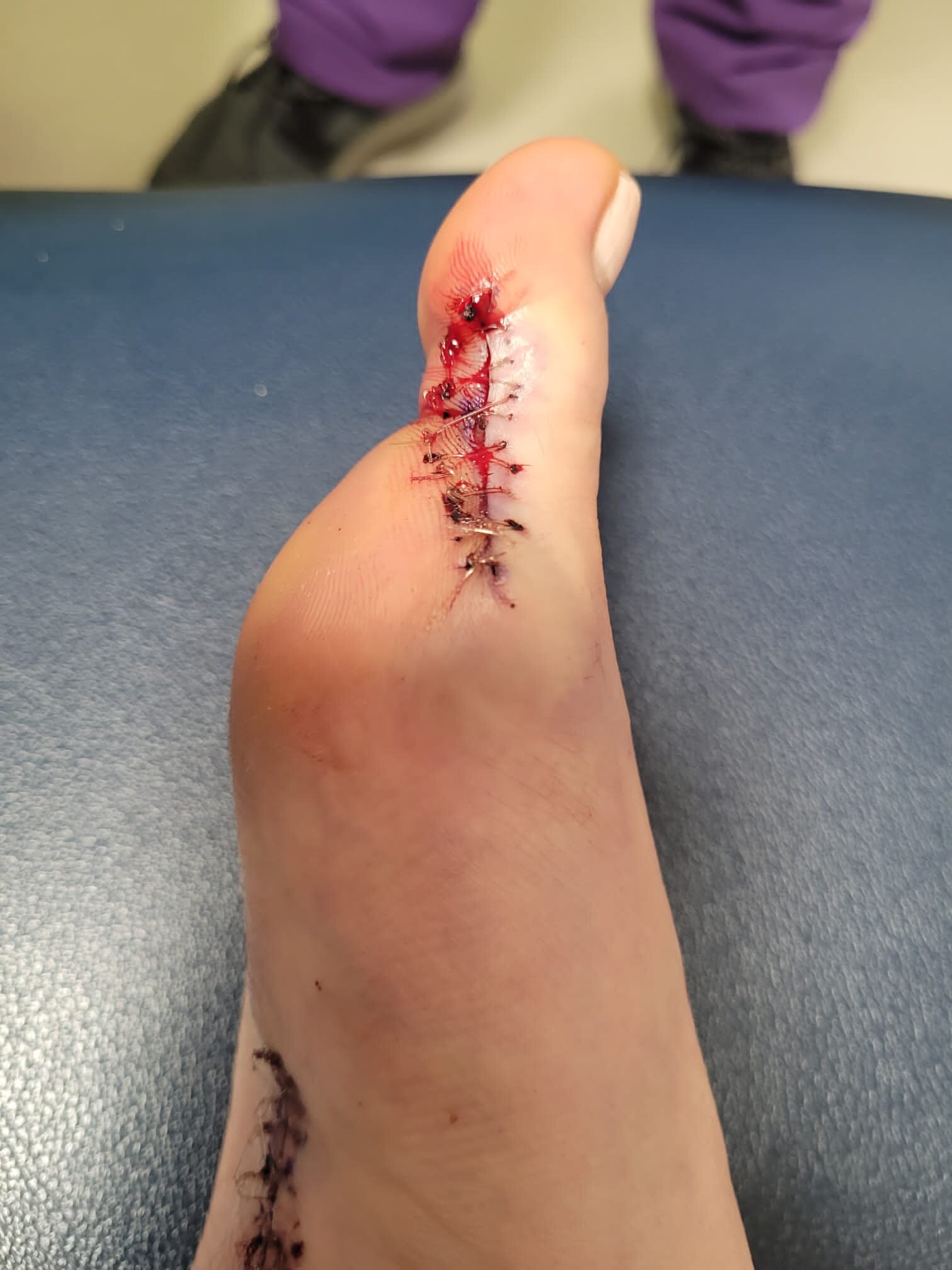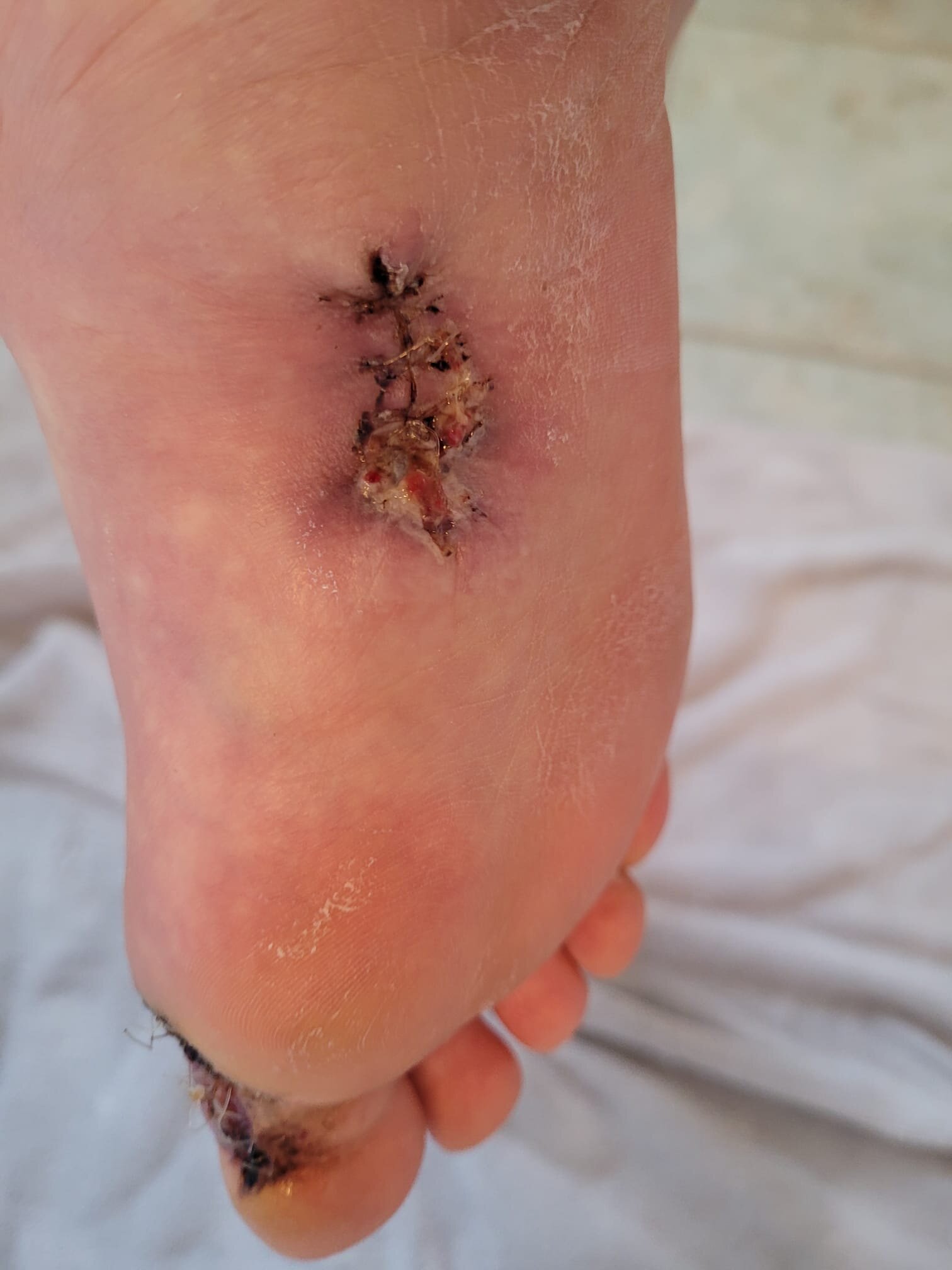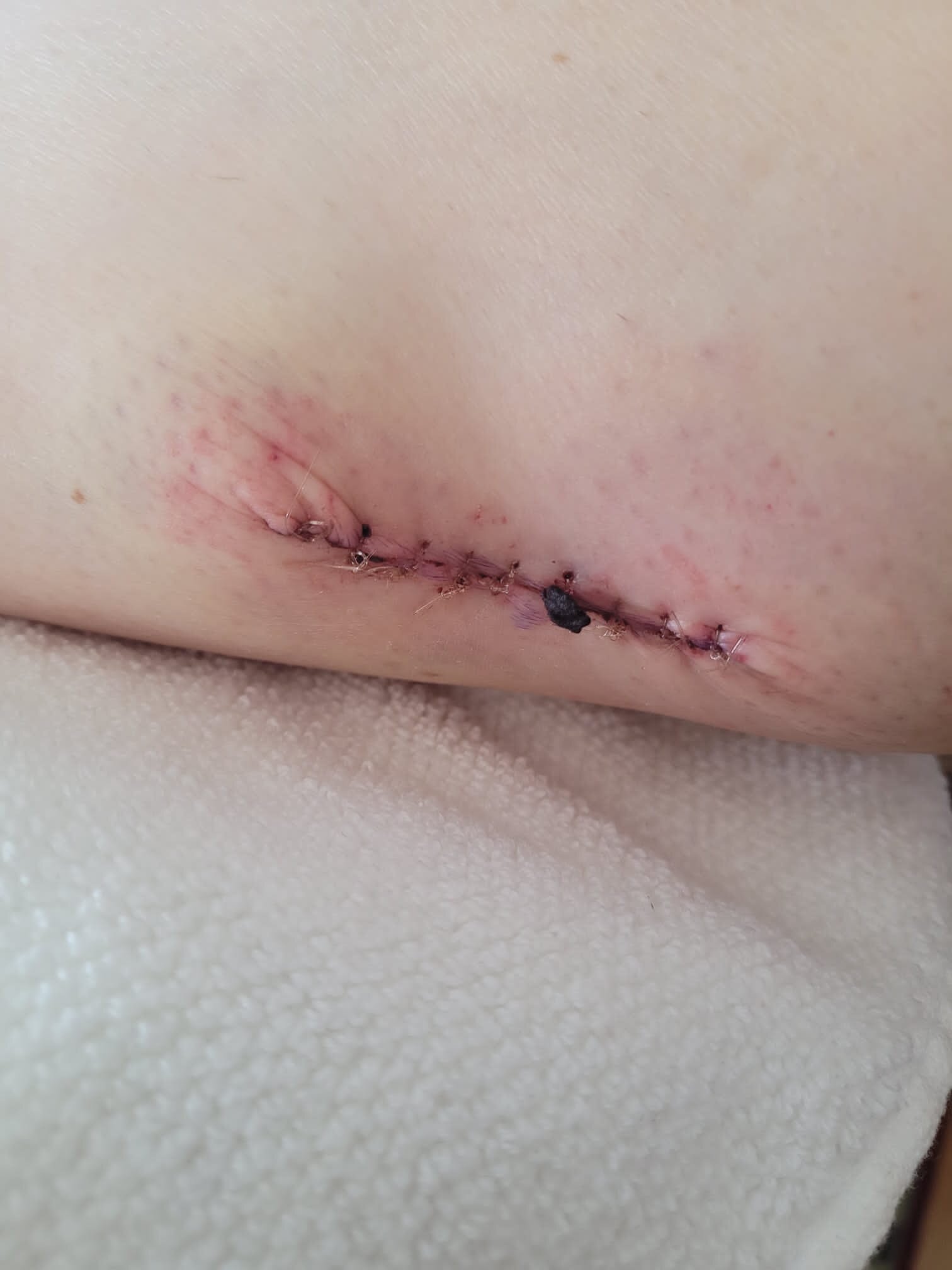It All Started With a Spot
/Warning: Graphic Images Below
It All Started
with a Spot
In 2016, Angie Gallo had a routine check-up with her family doctor. There, her doctor noticed a small brown spot on her big toe and suggested she have it checked by a dermatologist.
The dermatologist wasn’t concerned, though, and told Angie – then 44-years-old -- to monitor any changes. The following year, her family doctor once again sent her to the same dermatologist, who, once again, told Angie there was nothing to worry about.
Fast forward to Fall 2020: More spots began to appear on Angie’s lower legs and a new spot on the arch of her foot. The initial spot on her toe remained. She was referred to another dermatologist.
Months later, in February 2021 – mid-pandemic – Angie finally saw the second dermatologist, who, like the other, said everything looked fine.
Angie wasn’t so sure.
She pressed the dermatologist to take a second look, especially at a dark spot on the back of her calf. The doctor confirmed it was fine, but also agreed to do a quick biopsy to put her mind at ease.
One week later, Angie got a call from the dermatologist.
Angie had melanoma.
Freedom: What did the doctor say about your melanoma?
Angie: Well, the good news was my melanoma was actually “ melanoma in situ”, meaning it was In the top layer of skin only – stage 0. She agreed that she should biopsy the arch of my foot and the original spot on my toe – and by the beginning of March, they, too, came back positive for melanoma. I was booked for surgery April 6 at Mackenzie Health.
Freedom: Did you know what to expect?
Angie: Not really. I knew they would be removing tissue from the right toe, right sole, and right calf (Melanoma In-Situ). I had no idea they were planning on removing a significant amount of tissue surrounding the spots. The spots were approximately the size of a pea, but the areas removed were 1.5 - 2 inches in diameter!
They needed to remove a large area around the spot to ensure any "root" that may have formed would have been removed. Luckily, the Pathologist tested the areas and all were negative – the melanoma did not spread beyond the surface of the skin.
Freedom: What’s the recovery like?
Angie: I was eager to get back to work and determined not to let this change my life. I used crutches because I couldn’t walk. I was in a lot of pain. I followed all the instructions from my surgeon but was still in significant pain. After 2.5 weeks, I returned to remove the stitches.
At her two-and-a-half week follow-up, while removing the stitches, Angie’s surgeon noticed the wounds weren’t healing. She was sent back home to allow the wounds to continue healing before the stitches could be removed.
On May 1, Angie went to the Emergency Room. The pain and swelling were very intense and an infection was forming. Angie was placed on IV antibiotics and was referred to the Urgent Care Centre’s wound care department.
Angie: I had to go every day to clean the wound, which was so incredibly painful. They use a syringe with water to clean and disinfect the wounds. Then, they wrap it with a mesh - similar to that of a burn victim. I’ve been going daily, since May 4.
Angie was also treated with IV antibiotics from May 2 - 13th to clear the infection.
Freedom: How are you today?
Angie: I am now on oral antibiotics and continuing my daily treatments at the wound clinic. I’m also waiting for a referral to a melanoma specialist. I also had blood work and a CT scan done at Michael Garron Hospital, which has come back negative, aside from a few spots on the lungs they are going to monitor. I’ll return on December 14, 2021, for a repeat CT scan.
Freedom: What do you want people to take away from your story?
Angie: I want people to know that they always need to advocate for themselves. If I hadn't pressed the dermatologist in February to double-check, these spots could have grown deeper and could have metastasized to other parts.
I also learned a predisposition to melanoma is hereditary, and so my mother, sister and daughter need to get checked and be continuously monitored.
Freedom: How can people protect themselves from melanoma?
Angie: As we’ve all heard before, be Sun Safe. Sit in the shade where possible, cover up when you can, and when you can't, put sunscreen on everything that sees the sun! I was pretty good at applying sunscreen, but not great at reapplying.
In my teens and twenties – even in my early 30s — I was not good to my skin. I enjoyed tanning and even tanning beds — definitely bad habits that have likely contributed to my melanoma diagnosis.
Melanoma likes to grow in areas we are least likely to apply or reapply sunscreen -- like the ones on the arch of my foot and my big toe.
Angie is on the road to recovery -- we hope and pray for her health and well-being, and thank her for generously sharing her story. We will continue to follow Angie and keep you updated on her recovery and her journey.




